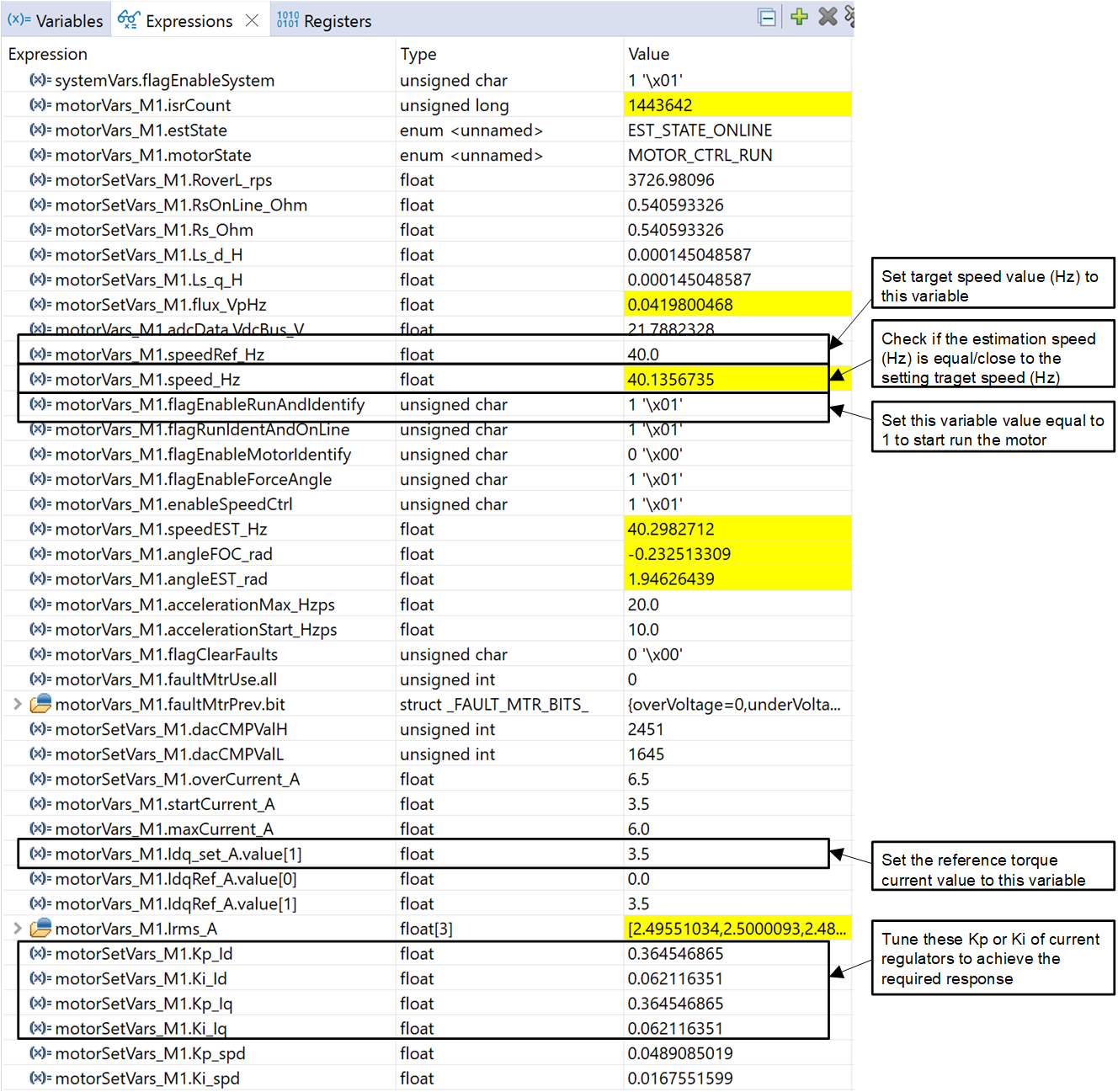TIDUF17 November 2022 TMS320F2800152-Q1 , TMS320F2800153-Q1 , TMS320F2800154-Q1 , TMS320F2800155 , TMS320F2800155-Q1 , TMS320F2800156-Q1 , TMS320F2800157 , TMS320F2800157-Q1
- Description
- Resources
- Features
- Applications
- 5
- 1System Description
-
2System Overview
- 2.1 Block Diagram
- 2.2 Design Considerations
- 2.3 Highlighted Products
- 2.4 System Design Theory
- 3Hardware, Software, Testing Requirements, and Test Results
- 4Design and Documentation Support
3.3.3.2 Running the Application
Run the code by going to Run → Resume or clicking the Resume button in the tool bar. Check the following:
- systemVars.flagEnableSystem should be set to 1 after a fixed time, meaning the offset calibration has been done. The fault flags, motorVars_M1.faultMtrUse.all, should be equal to 0.
- To run the motor with current closed-loop control, set the variable motorVars_M1.flagEnableRunAndIdentify to 1 in the Expressions window. The motor will run with closed-loop control using the angle from the angle generator at a setting speed in the variable motorVars_M1.speedRef_Hz. Check the value of motorVars_M1.speed_Hz to confirm that the two values are very close.
- Change the value of Idq_set_A.value[1] in the Expressions window to set the reference torque current. The motor phase current will be increasing with the same percentage accordingly.
- Set the variable motorVars_M1.flagEnableRunAndIdentify to 0 to stop the motor. Terminate the debug session and power off the power supply to the inverter board.
 Figure 3-14 Build Level 3 Variables in the
Expressions View
Figure 3-14 Build Level 3 Variables in the
Expressions View